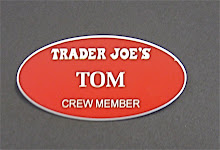Not long ago, a woman came through the TJ wine section and told me she had just returned from a business trip in Beijing, China. She and her colleagues had been staying in a four-star hotel and they wanted a bottle of wine to celebrate the end of their trip. They proceeded to the hotel’s wine shop and to their amazement, the shop was selling Charles Shaw wines for $25 a bottle!!! They actually bought a bottle just so they could say that they had. Besides, the Shaw was cheaper than the French wines.
I, being a curious sort, wanted to know how Charles Shaw wines could end up at a hotel in Beijing. Asking around I was told that Trader Joe’s has contracts with two countries to export Charles Shaw wines. One of those is China, hence, Charles Shaw wine in a 4-star hotel in Beijing.
There have been many articles recently about the growth in popularity of wine in China. I did some reading and research and thank
Wine Enthusiast for their recent April article on China wines, which was very informative. Wine is a status symbol and represents occupational and business success. Imports are from France, Australia, Italy, Spain, Chile and the United States (in that order).
Unfortunately, Chinese wine is reportedly, not very good. Many of the Chinese domestic wines blend in imported bulk wines from Europe and Australia. The problem for the Chinese wine growers is climate. In the warmer areas, too much rainfall during the hot growing season translates into heavy fungicide use and the lack of sunshine impacts sugar levels, color, and flavor.
In other wine growing regions, bitterly cold winters mean vines need to be buried beneath a foot or more of soil each fall and uncovered every spring. Cold, dry winters on one hand, and hot, humid summers on the other, are the “two cardinal constraints” on Chinese wine production.
Mihalis Boutaris, with a resume’ that includes a master of science degree from UC Davis, says “while canopy management and lower yields could be potential ways to deal with these two ‘cardinal constraints,’ I doubt in the long run any result could seriously compete with fine imported wine.”
Well, good readers, I needed confirmation, not speculation attributed to other wine writers. I left for China and arrived on April 15 in the beautiful city of
Shanghai. As fate would have it, our hotel placed a welcoming bottle of wine in our room. It was allegedly a bottle of Shiraz from Spain. Hmmm. My wife and I tasted it and gagged. It was truly awful. This was an example of bulk wine imported from a country and blended with Chinese wine. Yup, the wine writers were correct. Awful. And I flew all the way to China to verify for you, good reader.
That explains $25-buck Chuck wine in China. It’s better than the domestic Chinese wines. So, the next time you pour a glass of Charles Shaw for your friends, be sure to tell them that it’s a $25 bottle of wine they’re enjoying. It’s all about
location, location, location. Just like real estate.
Tom da Wine Guy



